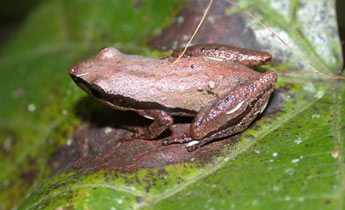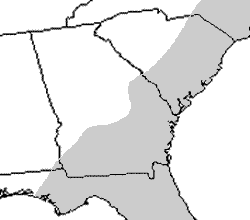Little Grass Frog (Pseudacris ocularis)
Little Grass Frog (Pseudacris ocularis)



Description: The smallest frog in North America, adults rarely exceed 1.6 cm (0.6 in) in length. Distinguished by its tiny size and a dark stripe running from the snout through the eye and down the side of the body. Dorsal coloration ranges from brown to reddish, often plain but occasionally with faint markings. Due to its diminutive size, it is usually restricted to low vegetation near the ground.
Range and Habitat: Occurs throughout the Coastal Plain of the southeastern United States, from southeastern Virginia through Florida and west into Mississippi. Prefers moist grassy areas, bogs, and marshes, often in low-lying vegetation near shallow water. Frequently found in grassy habitats that flood seasonally.
Habits: Secretive and easily overlooked due to its small size. Found low in grasses, sedges, and other ground-level vegetation. Breeding may occur in any month, but peak activity generally occurs in late spring. Eggs are deposited in shallow, fish-free pools.
Call: A high-pitched “tink-tink-tink,” resembling the sound of tapping glass.
Conservation Status: Common throughout its range and not protected. However, its small size and specific habitat associations make it vulnerable to habitat loss and wetland alteration.
